Making fresh pesto at home is easy with plenty of basil and a food processor! It’s a versatile, no-cook sauce that you are sure to love.
Pesto is a no-cook sauce from Italy made with fresh basil, garlic, pine nuts, and plenty of good olive oil. Read how to make your own and get lots of ideas on how to enjoy it below.
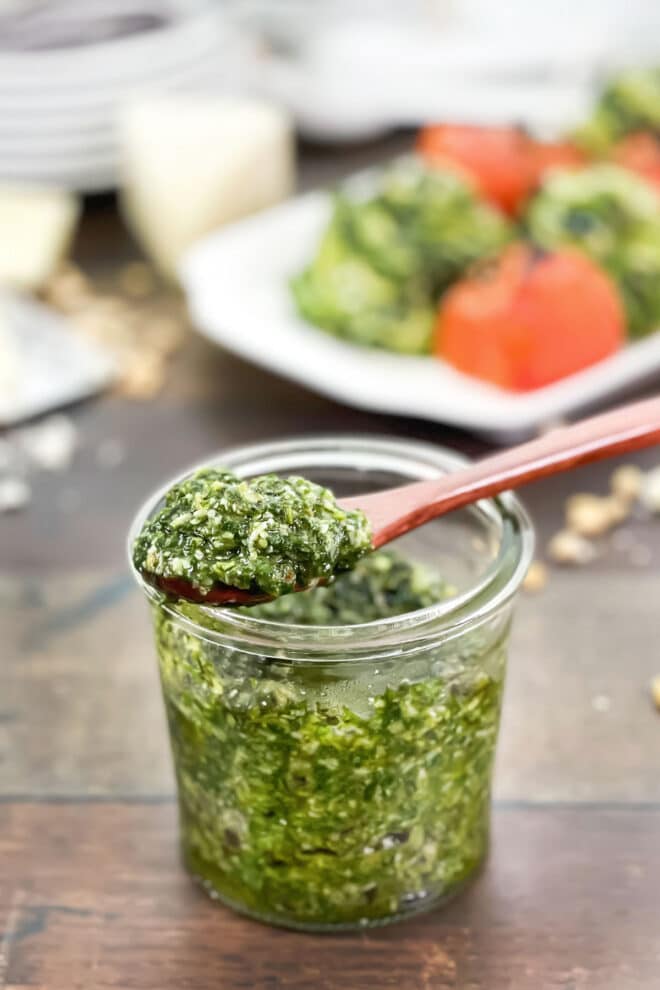
What Is Pesto?
Pesto is an oil-based sauce from the Genoa region of Italy. It’s made with fresh basil, garlic, olive oil, Pecorino or Parmigiano Reggiano, and pine nuts. It’s typically tossed with pasta, vegetables, fish, or used as a bruschetta topping.
Olive oil matters in this recipe since it forms the base and is one of the most pronounced flavors. Find an extra-virgin olive oil that you love raw. By that I mean, one that you like the flavor of when it comes right out of the bottle. Some extra-virgin oils can be peppery, some are mild, others are grassy and fresh tasting, but pick the one you like best without it being heated because the pesto is never cooked.
Using toasted pine nuts is important because they give the pesto a more developed flavor and better texture. Pine nuts are typically sold in small jars in the spice aisle or international aisle, in small packages in the baking aisle, or sometimes in the aisle where other nuts are sold. If you’re unable to find them toasted, that’s easy to do at home.
How To Toast Pine Nuts
Heat a small skillet over medium-high heat and add the pine nuts. Swirl the pan frequently to prevent them from burning. When you start to see them glistening in the pan, that indicates they are releasing their oils and are close to becoming toasted. Keep a close eye on them at this point and continue to swirl the pan until they are light golden brown. Transfer the toasted nuts to a plate to cool completely before using in the pesto.
How To Make Basil Pesto
For the pesto, add the toasted pine nuts and garlic into the bowl of a food processor fitted with a blade attachment. Pulse these together first to give them a head start. You’ll want these to be in much smaller pieces than everything else so that the pesto doesn’t end up with oddball, large pieces of pine nuts or garlic. The fat in the pine nuts will also help unlock the fat-soluble flavor compounds in the garlic before the olive oil is added.
Don’t worry too much about bruising the fresh basil leaves or generating heat from the food processor blades. The food processor won’t be running long enough for that to happen. Pesto is traditionally made on a cutting board using a mezzaluna and then in a mortar and pestle, anyhow, which can take almost a half-hour. The basil never turns brown during that process, so you have some time and grace with this.
Basil, however, will turn dark or become brown when exposed to the air for a long period of time after being cut. To prevent this, the basil just needs to be quickly covered in oil, which automatically happens in the food process within seconds. Be careful not to overprocess using the food processor though. Use quick pulses to mince the ingredients until they look like the size of crushed red pepper flakes. The consistency of this sauce should be thick, with just enough oil to help it glide over pasta, or in this case, zoodles, without it sliding off.
A standard food processor can easily make a double batch of pesto. Store the other half in the refrigerator up to three days, or in the freezer up to one month. If storing in the refrigerator, transfer the pesto to a glass or ceramic jar and top with extra olive oil to prevent exposure to the air, then cover. In both the refrigerator or freezer, the basil will darken slightly, but is still safe to eat and is delicious.
Customize Your Pesto Recipe
If basil is out of season or you’re not able to find enough, don’t panic. You can add kale, mustard greens, dandelion greens, arugula, or watercress to the basil, using a 50-50 mix. Or replace the basil altogether with any of these.
If you’re not able to find pine nuts, or just not a big fan of the flavor, substitute with toasted cashews, walnuts, or pistachios.
Using Your Homemade Pesto
While of course the most common use for pesto is as a pasta sauce, there’s lots more ways to enjoy it. Try using it on bruschetta or as a sandwich spread. Use it on my Pesto Chicken or on top of fish. Toss grilled or roasted veggies with some pesto. It’s also a great way to boost the flavor of soup like in my Summer Minestrone.
More Fresh Sauces and Condiments
If you love this recipe, you’ll love the fresh sauces and condiments that I’ve linked to below. And, you should definitely check out all of my sauce recipes over here.
I can’t wait to hear all the amazing ways you find to enjoy it now that you know how to make your own!
Print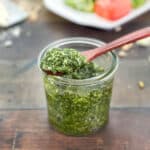
Fresh Basil Pesto
- Prep Time: 5 minutes
- Cook Time: 0 minutes
- Total Time: 5 minutes
- Yield: 4 servings 1x
- Category: Sauce
- Method: No-Cook
- Cuisine: Italian
Ingredients
- 2 Tbsp. toasted pine nuts
- 2 garlic cloves, peeled
- 2 and 1/2 cups packed fresh basil leaves, thick stems removed
- 1/2 cup grated Pecorino or Parmesan cheese
- 1/2 cup extra virgin olive oil
- 1/4 tsp. salt
Instructions
- In the bowl of a food processor fitted with blade attachment add toasted pine nuts and garlic. Cover and pulse until ingredients are well minced.
- Add basil, Pecorino, olive oil, and salt. Pulse until all ingredients are finely minced and have formed a thick sauce.
- Serve immediately or transfer pesto to a glass or ceramic container and store in refrigerator, covered, up to three days.
Notes
If storing in refrigerator, pour enough olive oil over the top of the pesto to cover it, and then seal the glass or ceramic container. This will help to prevent the basil from oxidizing and turning dark.
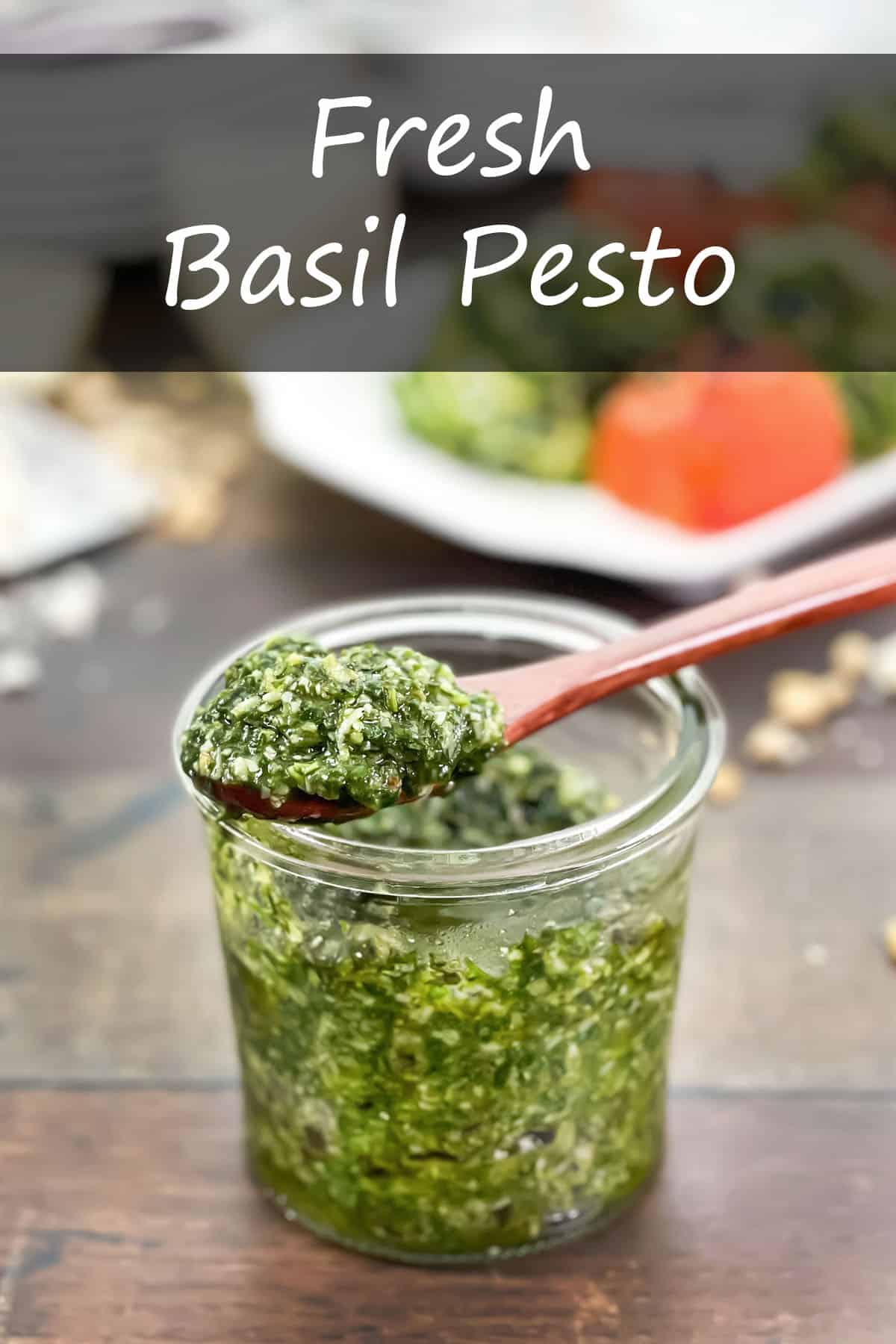

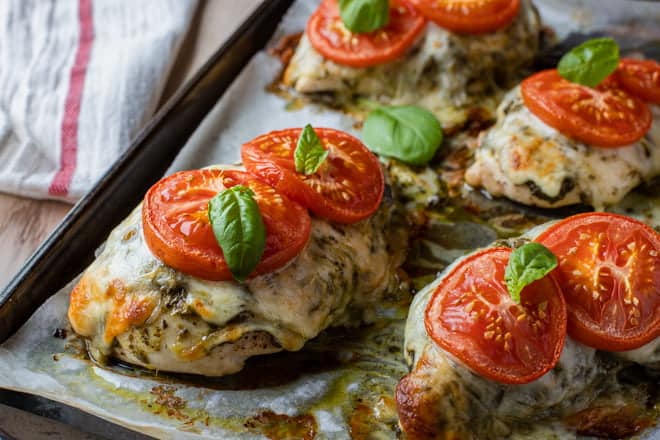
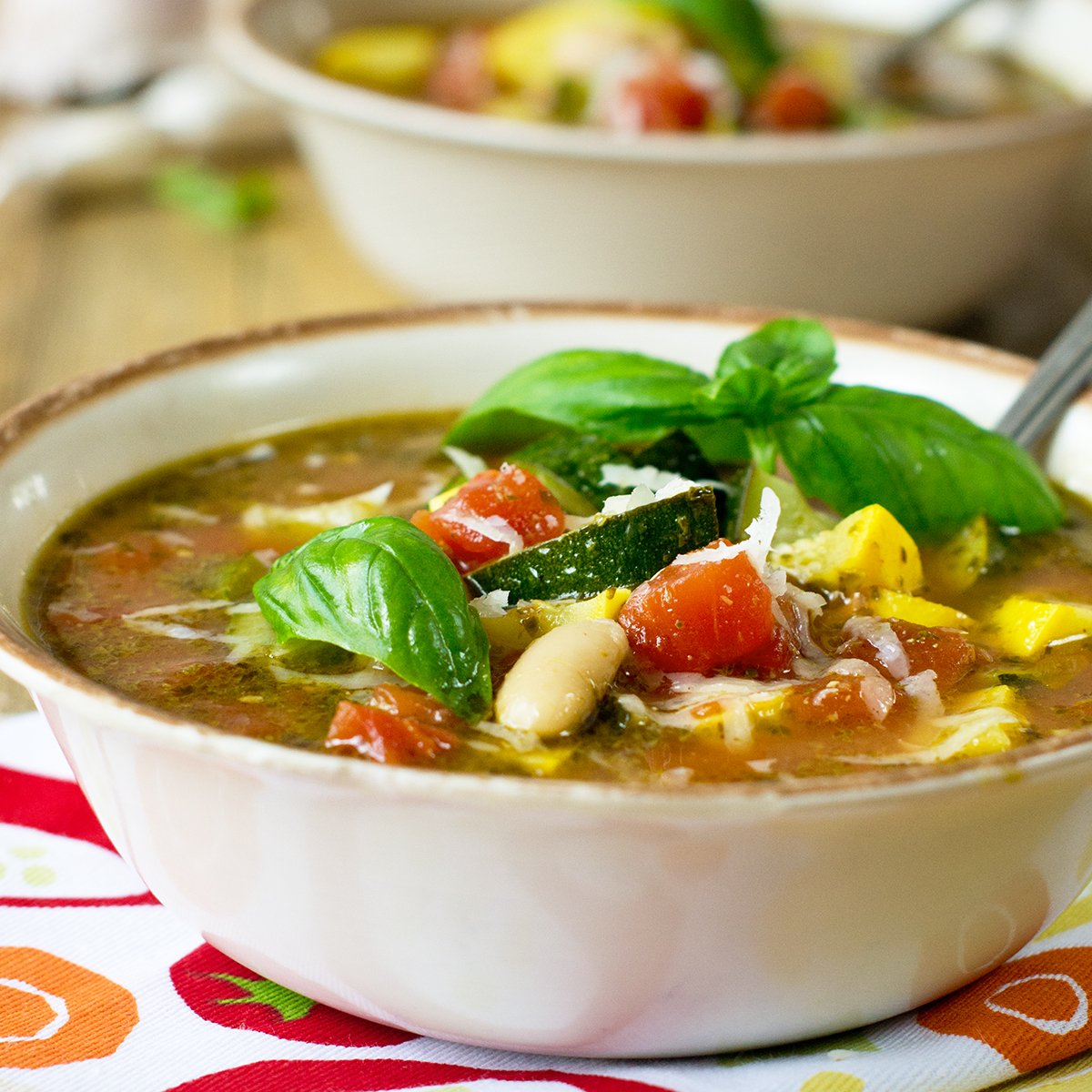

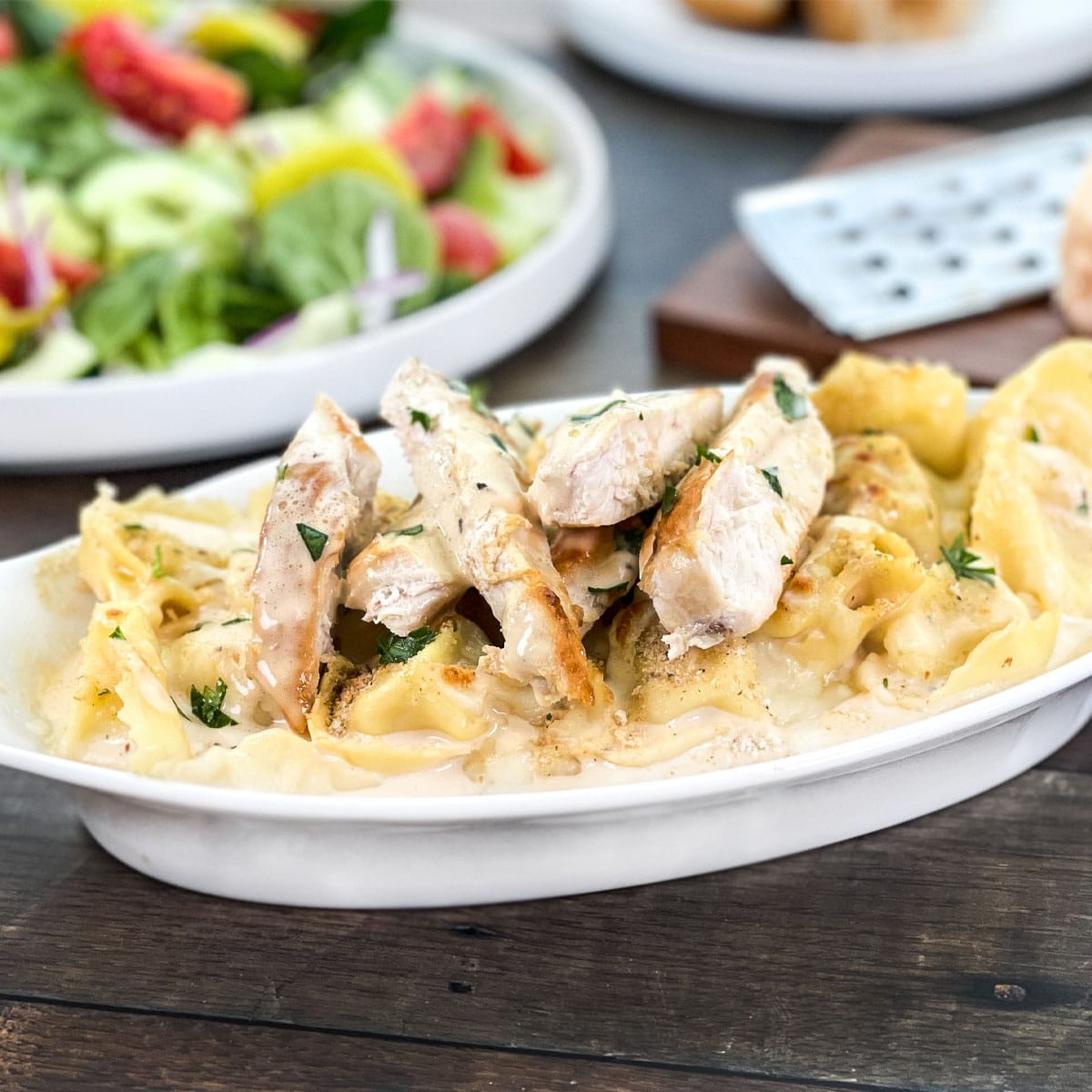



















Leave a Reply